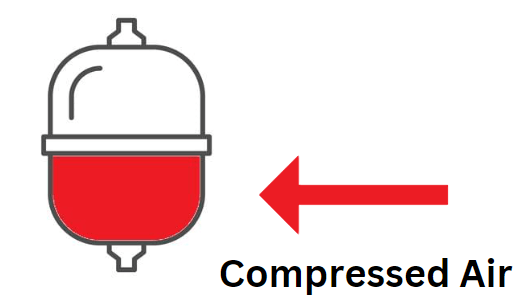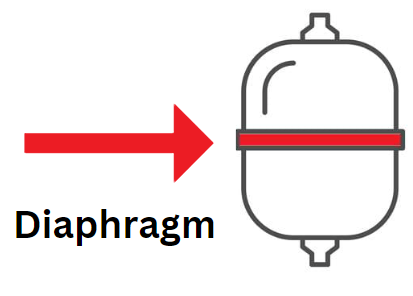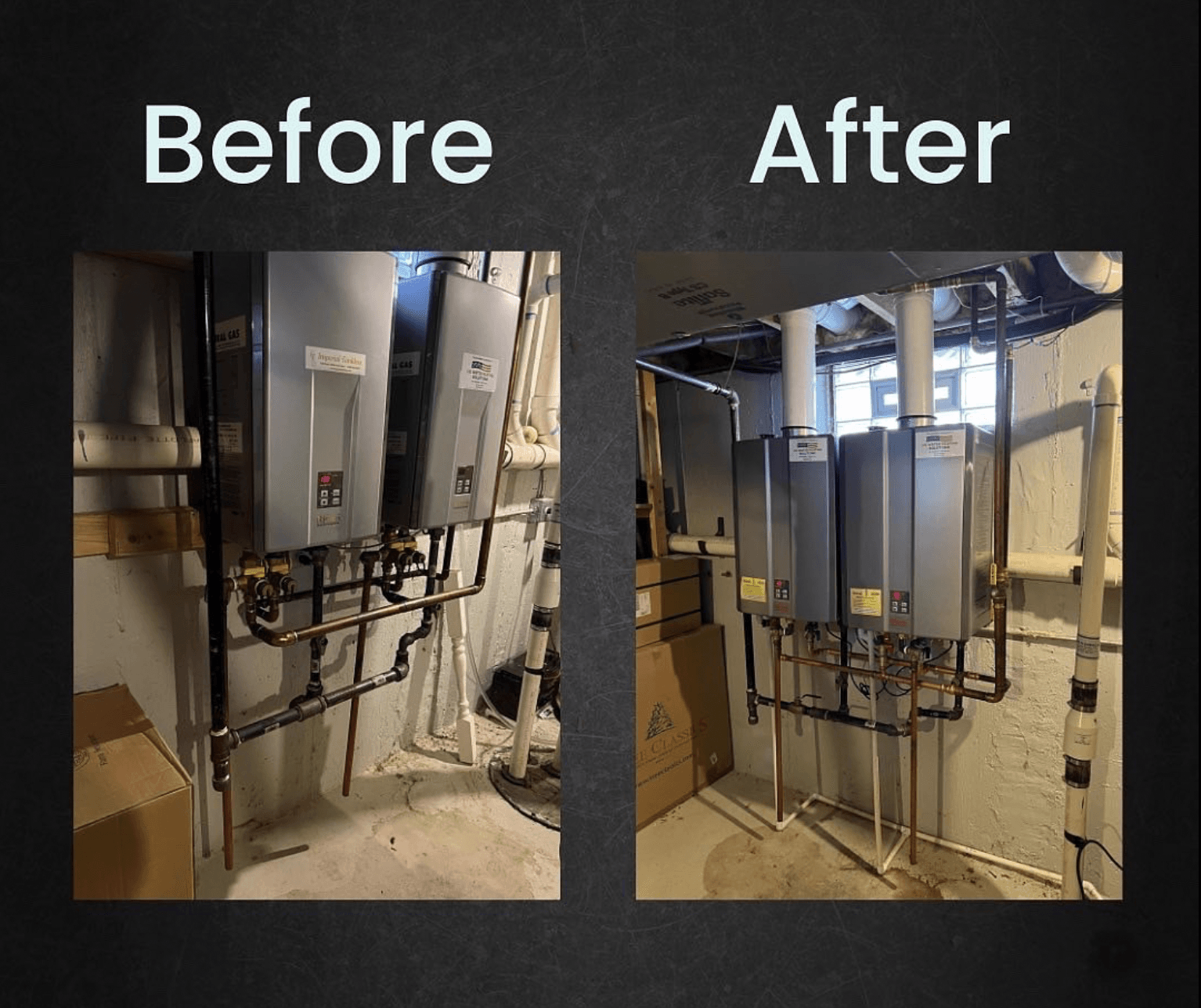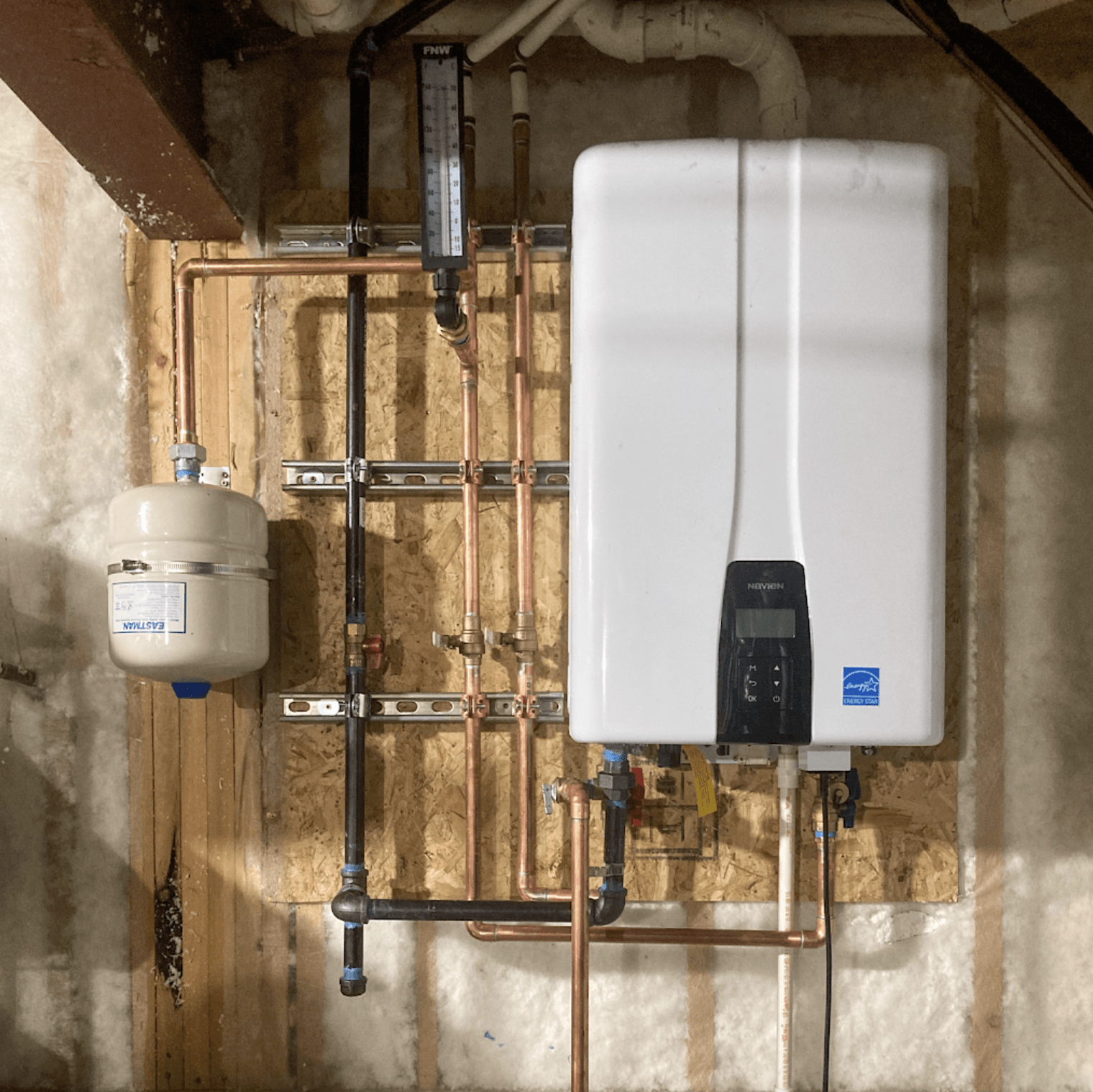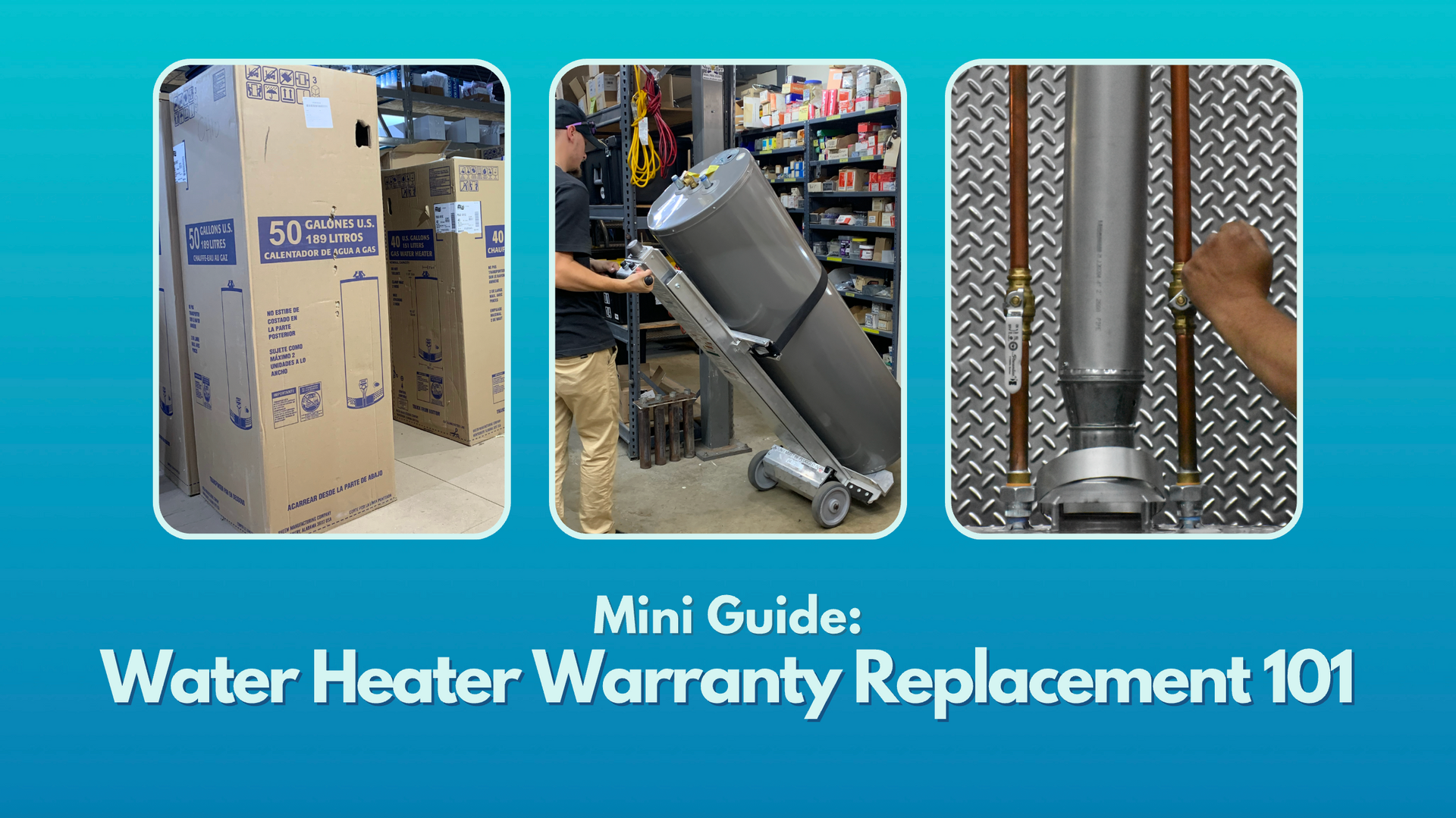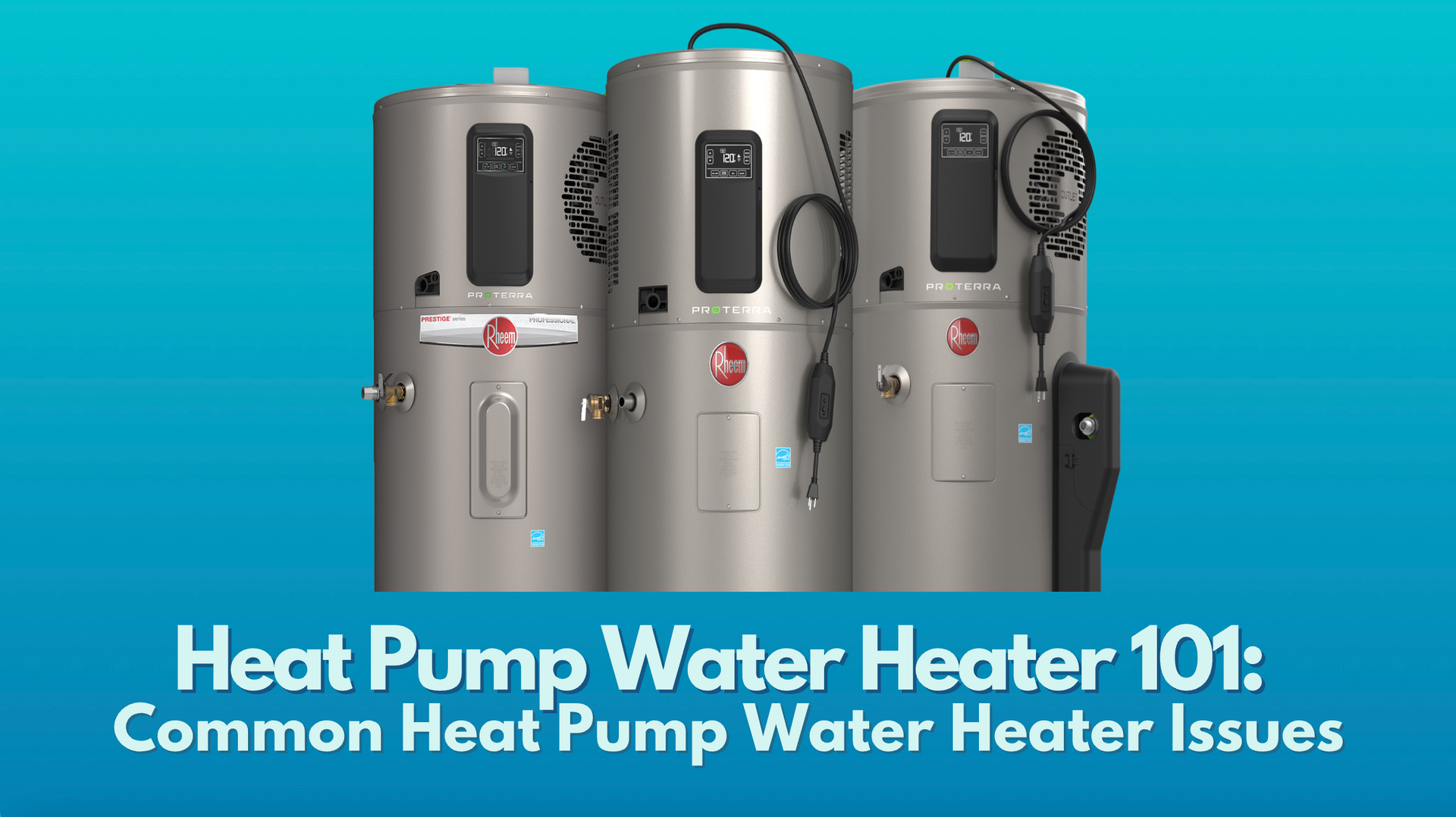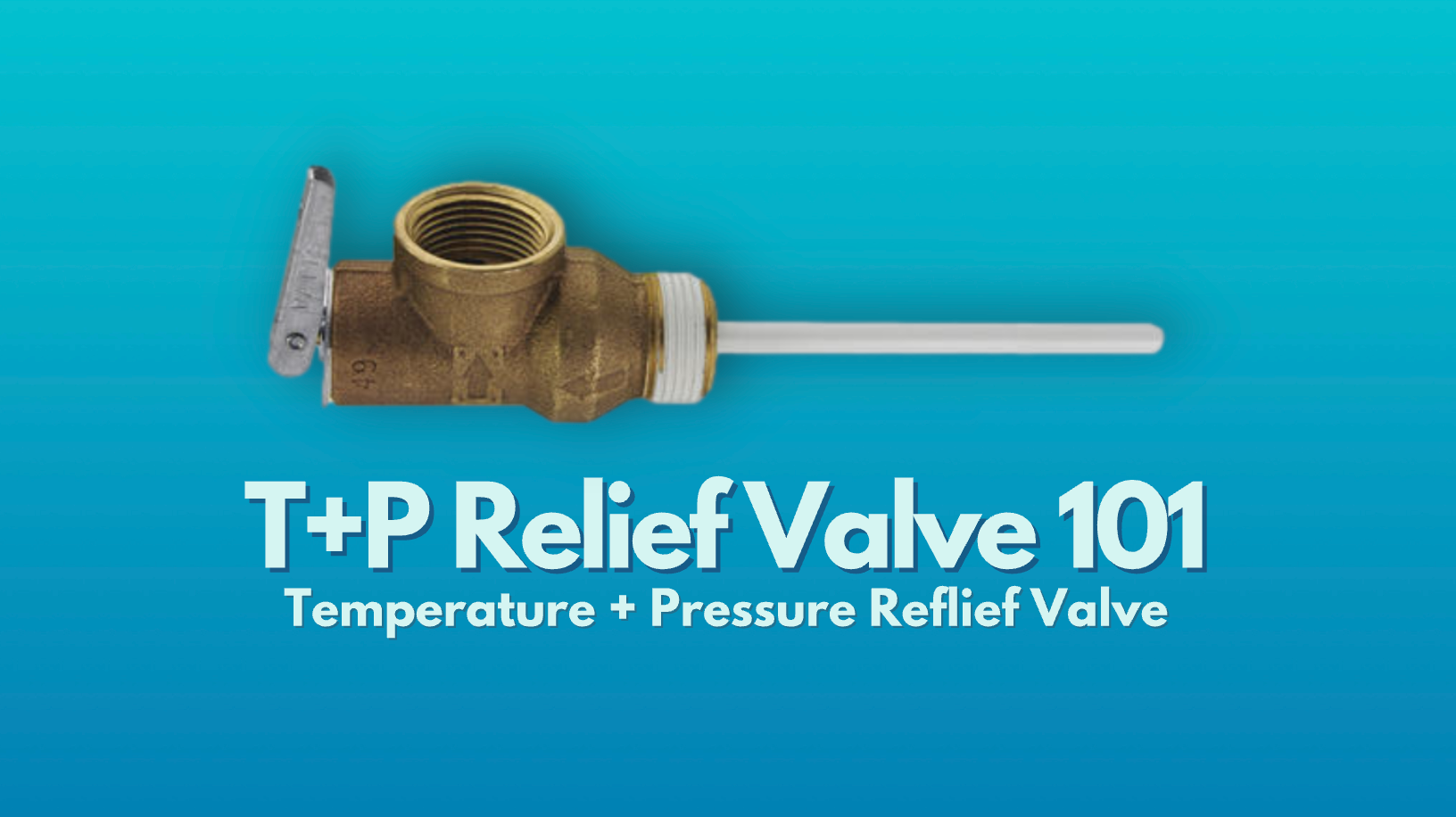Do I Need a Water Heater Expansion Tank?
Article Last Updated: June 23, 2023
Technical Consultation for this article provided by: Licensed Master Plumber (MO) Lucas N. + Licensed Journeyman Plumber (KY) Stephen H.
Understanding Thermal Expansion
When water heats up, it expands in volume through a process known as thermal expansion.
Water expands at an estimated rate of 4% when heated from room temperature to its boiling point, with some variation based on water temperature rise.
If you have a full 50-gallon water heater, the water inside will
expand to 52 gallons
in volume. The extra two gallons of water expansion need somewhere to go, or they will create pressure inside of the tank,
weakening the tank material and the rest of your plumbing system.
The rubber diaphragm inside the expansion tank along with being properly pressurized upon installation will
alleviate extra pressure on the tank,
giving the expanding water somewhere to go.
Closed Water Heating Systems
Your water heater most likely utilizes a closed system, meaning check valves and other safety features keep water on your side of the meter instead of backflowing into the potable water supply in the event of a main water line break.
Closed heating systems have numerous advantages, including:
- easier installation
- higher efficiency
- no evaporation
- backflow prevention
The check valve also prevents backflow from entering the main potable water (cities side) system, contributing to stable pressure levels throughout. Furthermore, most municipalities require a closed system due to the safety features that come with it.
When water expands inside of a closed plumbing system, it can’t escape. Hence, the need for the expansion tank.
In the case that the expansion tank cannot handle the increased pressure of the heated water or no expansion tank, the excess pressure can escape out the
temperature and pressure relief valve (T&P relief valve), then
into a drain pan. However, this is not the ideal solution as it can lead to
water damage and premature
deterioration of the T&P valve.
If your plumbing setup uses an open system, an expansion tank is not required, but an open setup is rare.
What Is an Expansion Tank?
Let’s talk a little bit about the expansion tank itself.
The tank is made from heat-resistant plastic or metal, although it’s best to avoid steel as the oxygen can compromise the integrity of the material.
Most residential expansion tanks are relatively small, usually between 2 - 4 gallons. Standard residential expansion tanks withstand 150 psi and 200 degrees. However, you can find commercial expansion tanks as large as 100 gallons with higher pressure and temperature ratings.
Consider the water heater capacity
and
static supply pressure (psi) to determine the correct size expansion tank for your needs. You’ll also need to consider the temperature setting, as higher temperatures used in commercial applications produce more pressure.
We at U.S. Water Heating Solutions offer 2-gallon expansion tanks for residential purposes (Amtrol ST-5) and 4.4 gallon expansion tanks (Amtrol ST-12) for commercial purposes.
How Expansion Tanks Work
The expansion tank has two compartments divided from the top and bottom by a rubber diaphragm: the bladder and a compressed air-filled chamber.
The bladder is where the expanded water enters the expansion tank from the water heater, and the second chamber connects to the cold water inlet.
As the water enters the tank, it will deflate the barrier in the middle and compress the air in the second chamber, balancing the pressure throughout the plumbing system. The compressed air in the tank allows it to absorb the excess water pressure from the main hot water heater up to the inlet water pressure setting (usually 40 - 60 psi).
If the expansion tank is completely filled with water, it will prevent the compressed air from equalizing the pressure levels, so it’s important to get a large enough expansion tank.
Once pressure levels stabilize, the barrier will return to its original form, similar to a spring.
FAQ: Do I need an expansion tank for my tankless water heater?
-Answered by our resident Master Plumber, Lucas
Many homeowners question whether they need an expansion tank for their tankless water heater.
In most instances, you do not need an expansion tank for a tankless water heater, however, this depends on your installation setting, local plumbing codes, and plans to make any additional upgrades/changes to your plumbing system.
For example, the dual Rinnai tankless water heater installation on the top did not require a thermal expansion tank by local code, as the customer was replacing existing units on a standard closed system.
In the installation on the bottom, a customer upgraded to a tankless water heater from a power vent unit (also installed by Lucas himself!) and had plans to make additional plumbing upgrades. An expansion tank was required for this install because the homeowner was planning to add a recirculation pump/recirculation line to his plumbing system. As a result, an expansion tank was required by local code because the recirculation pump creates a closed loop system: while the pump runs, it will recirculate the unused hot water back into the tankless water heater, creating thermal expansion that needs an escape route.
Additionally, if your tankless water heater connects to a system with a storage tank you will need a thermal expansion tank.
Key Takeaway: If you have a recirculation line connected to a tankless water heater or your tankless water heater is connected to a system with a storage tank, you need a thermal expansion tank.
What Happens If You Don’t Install an Expansion Tank
Possible Plumbing Code Violations
Most areas require every new water heater installation with a closed system to include an expansion tank.
Laws vary by location regarding whether building code requires an expansion tank to be installed on an old water heater or added upon the installation of a new water heater.
Void Warranty
A closed hot water system without an expansion system not only violates local plumbing codes, but it may also be grounds for voiding your water heater's warranty.
See this excerpt from a warranty for an A.O. Smith GDHE-75 Vertex Power Direct Vent gas water heater for an
example of standard warranty exclusions, including thermal expansion (s.):
"This warranty shall have no effect if the following events occur...
the water heater is installed in a closed system without adequate provision for thermal expansion."
Water Heater Leaks
Without an expansion tank, your water heater will likely experience excessive pressure levels. Consistently high pressure levels put additional stress on the water heater's tank, causing it to spout a leak and deteriorate prematurely. After a water heater experiences a leak at the tank, it needs to be replaced. You will end up paying for a new water heater instead of paying for a small expansion tank. If the cause of your water heater leak can be attributed to lack of a thermal expansion tank or an incorrectly charged thermal expansion tank, your manufacturer's warranty will
not
cover water heater replacement.
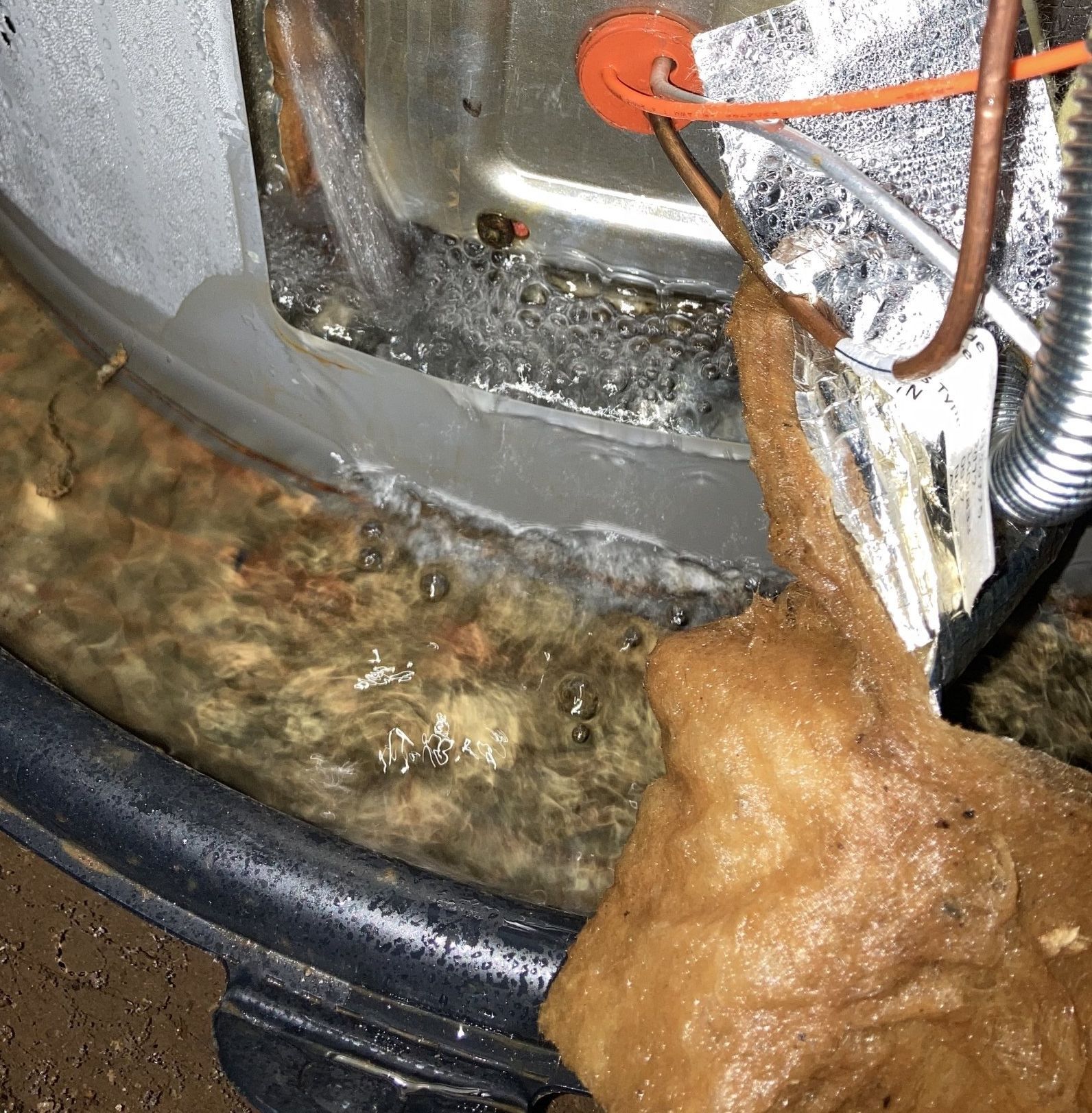
Water Heater Expansion Tanks at U.S. Water Heating Solutions
When you need a new thermal expansion tank, call the experts at U.S. Water Heating Solutions.
We offer both 8 gallon and 12 gallon expansion tanks, perfect for just about any residential water heater. We will install your expansion tank as part of a new installation or after the fact.
We offer a wide variety of additional water heater services as well, including:
- Water heater repair
- Water heater installation
- Thermal expansion tank installation
- Water heater maintenance
- Commercial water heater service
- Warranty service for most water heater brands
Contact U.S. Water Heating Solutions
today to schedule your appointment!





